Written by Tony Medici
[Additional comments by Thom are in italics and brackets, like this]
A quiet start in the morning
As we pulled away from camp at sunrise, the group I was with today (with some encouragement from me) decided to stop for sunrise photos. I was stopping for distant bird pictures that happened to have the trees and the sun as its view. So with the sun rising in the haze and dust, I took a quick picture, which also happened to have a Grey Heron perched in the tree. One thing that a lot of first-time safari folk tend to do is ignore the environment, but those photos tell us stories that just headshots of animals don't.
This was a short stop because everyone was hoping to revisit the small pride of lions we spotted yesterday late in the day. In the meantime, we stopped for what we saw when various animals attracted our attention. Here are a few random images I took while we did that. They included species including Waterbuck, Tsessebe, Yellow-billed Kite, Red-billed Spurfowl, Swainson’s Spurfowl, Common Ostrich and Impala. These are just a few of the species I spotted during the day, (plus 41 bird species today and an eventual 120 bird species for the whole trip). Due to lack of a convenient app, I don’t track mammals, reptiles or insects species.
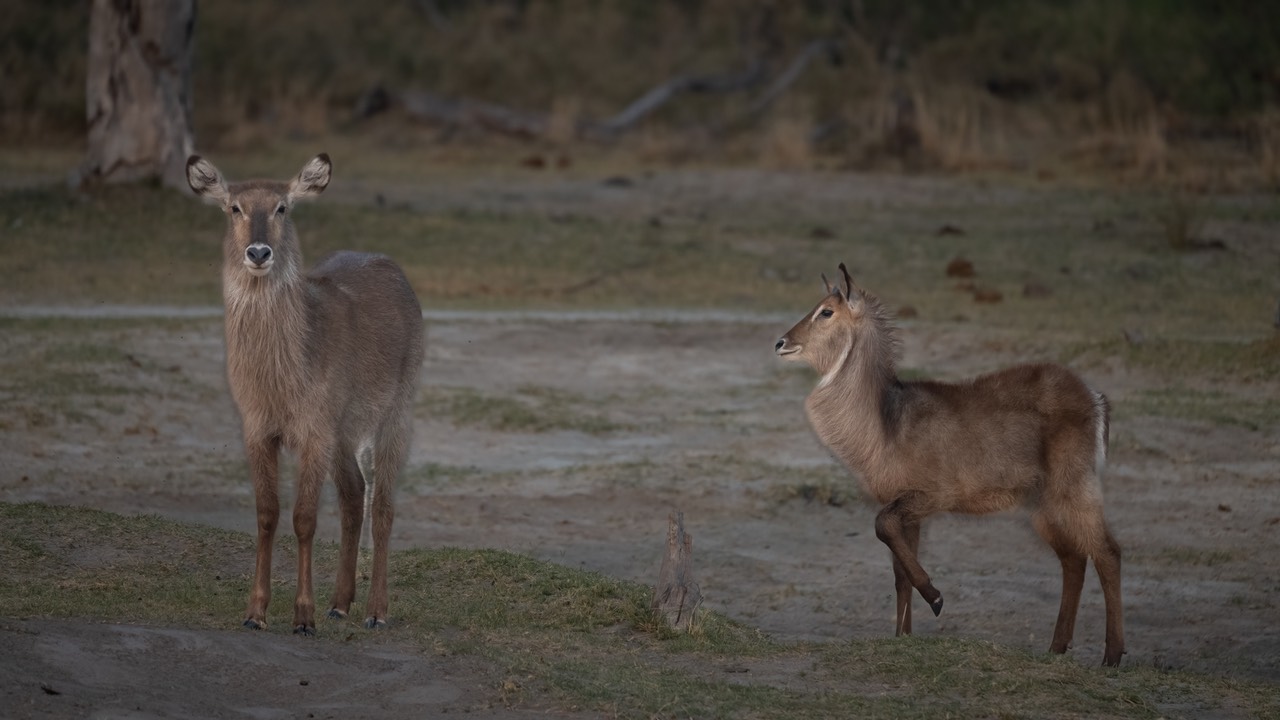
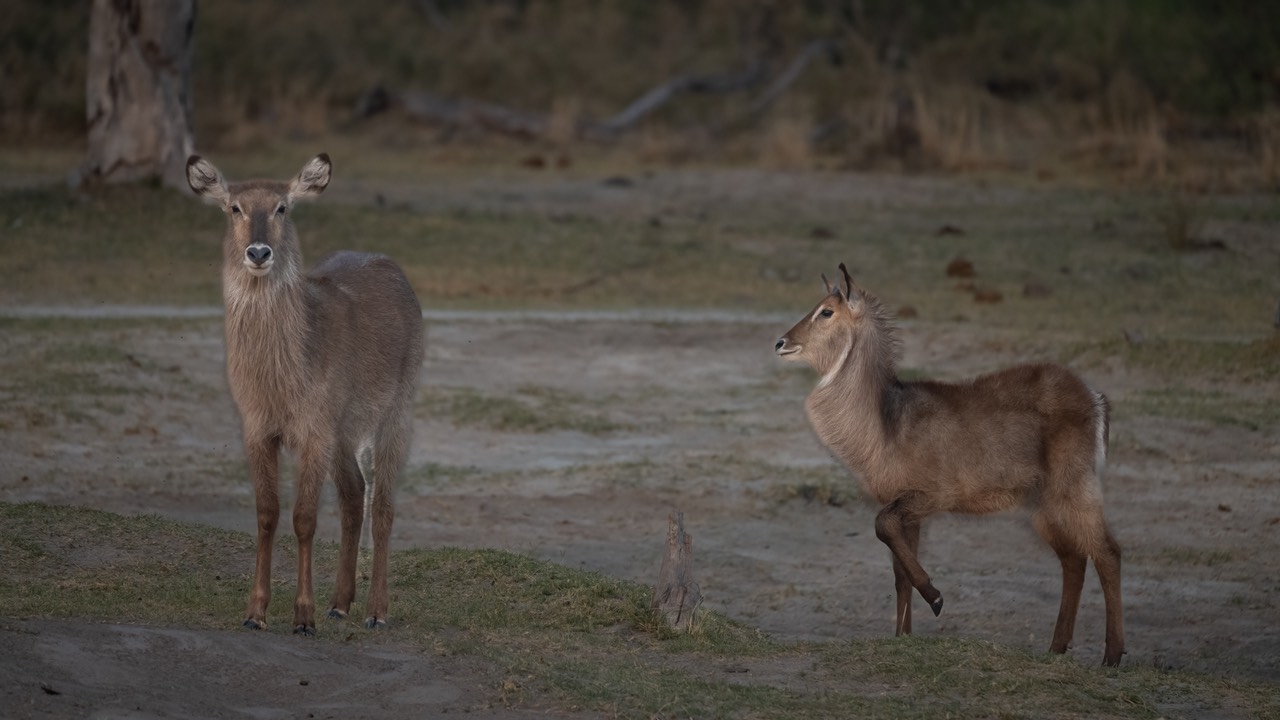
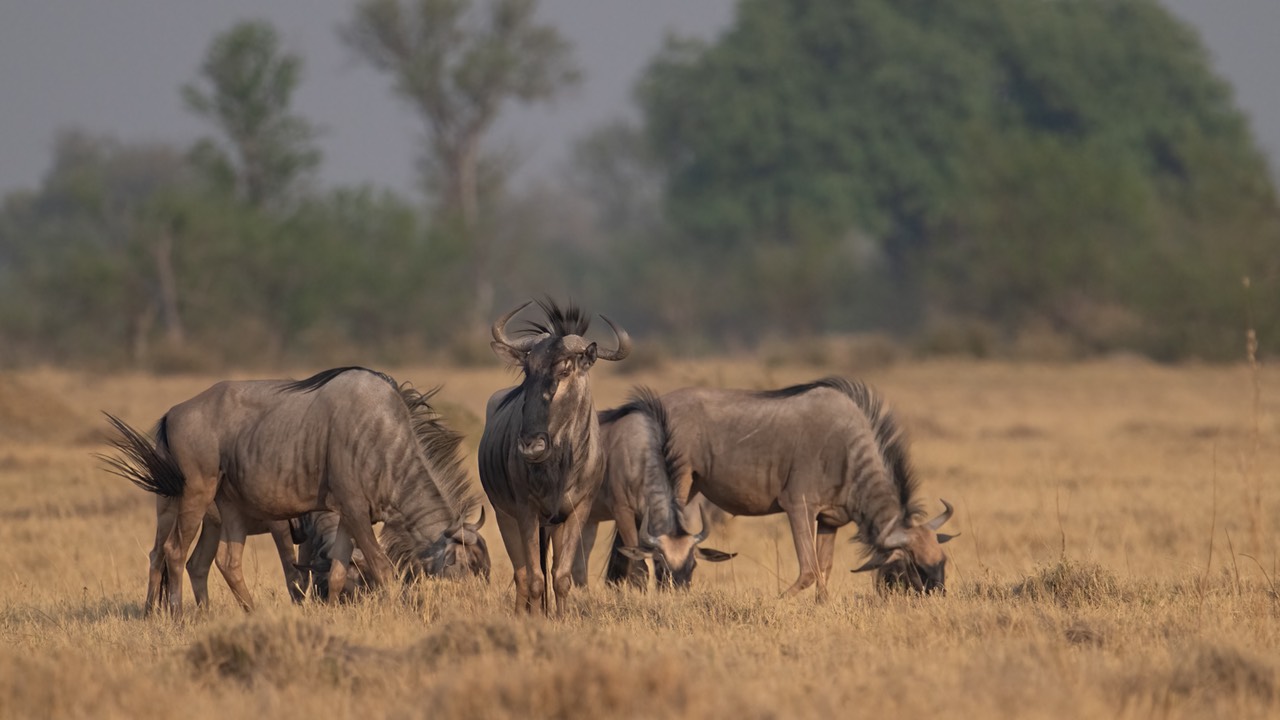
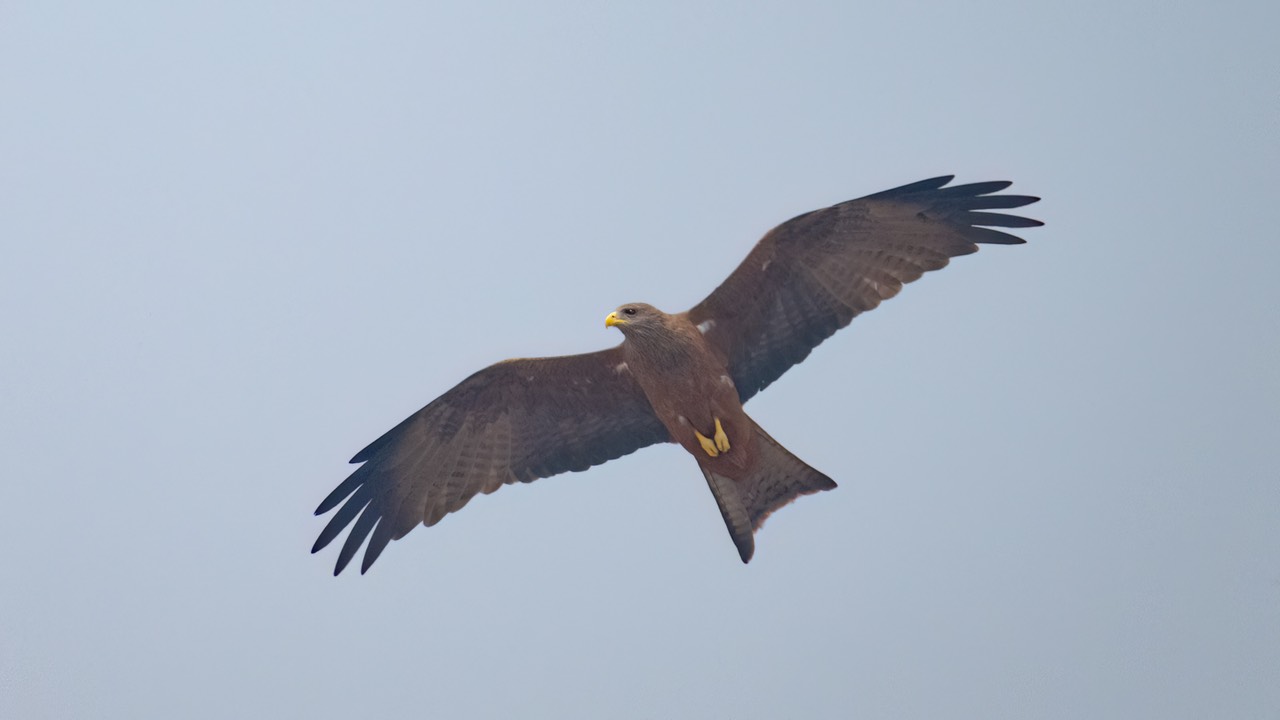
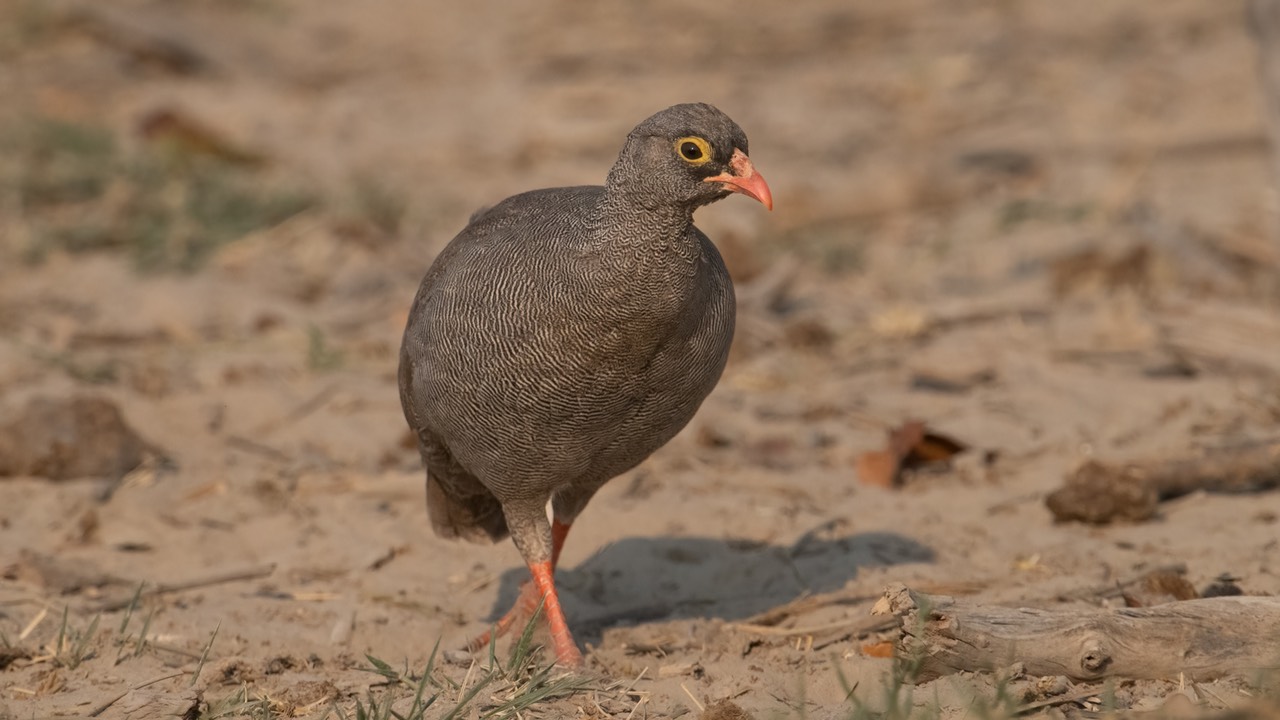
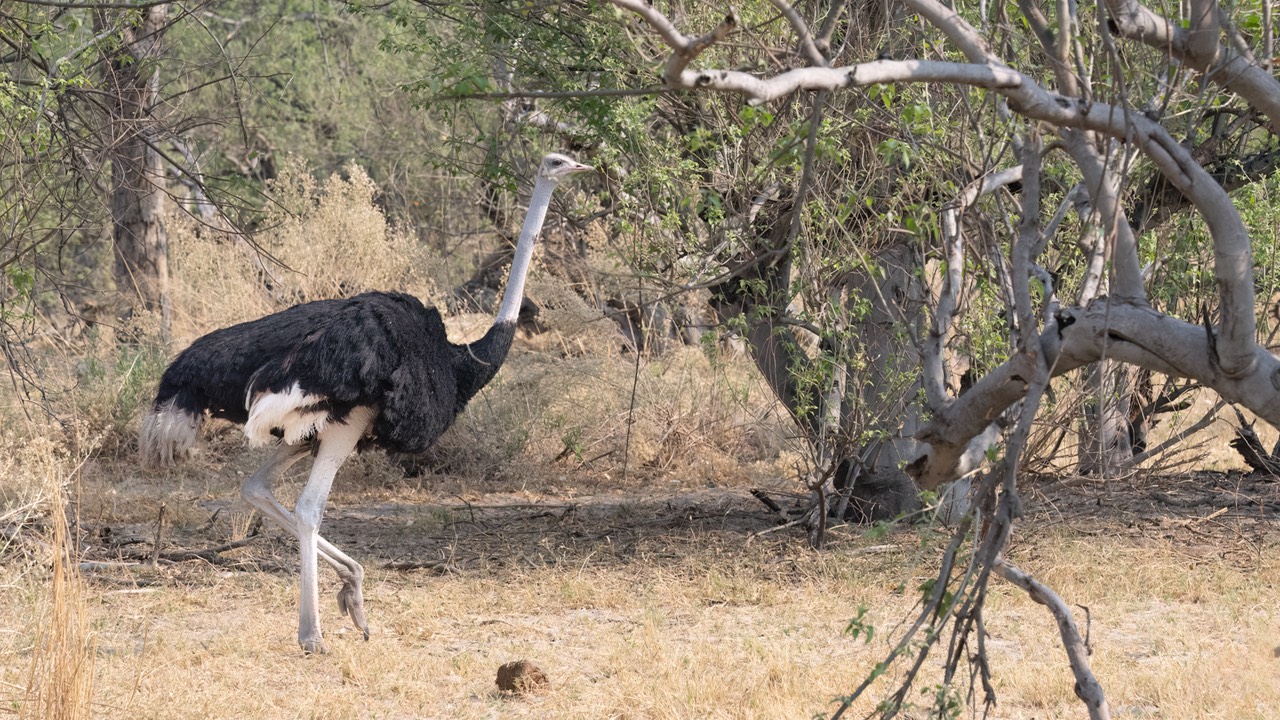
We never did find the three sleeping lions from the previous day. However, we weren’t out long before we found a different, nine lion pride.
A pride of nine lions on the move or on a hunt
Adding those nine lions to the three sleeping lions we found on the first day that were sleeping in the grass gave us a count of twelve individual lions spotted in just a few hours work, which left our group very happy with the sightings. During the initial contact, the Lions were active and playful and although they occasionally they moved toward prey, they never actually chased them.
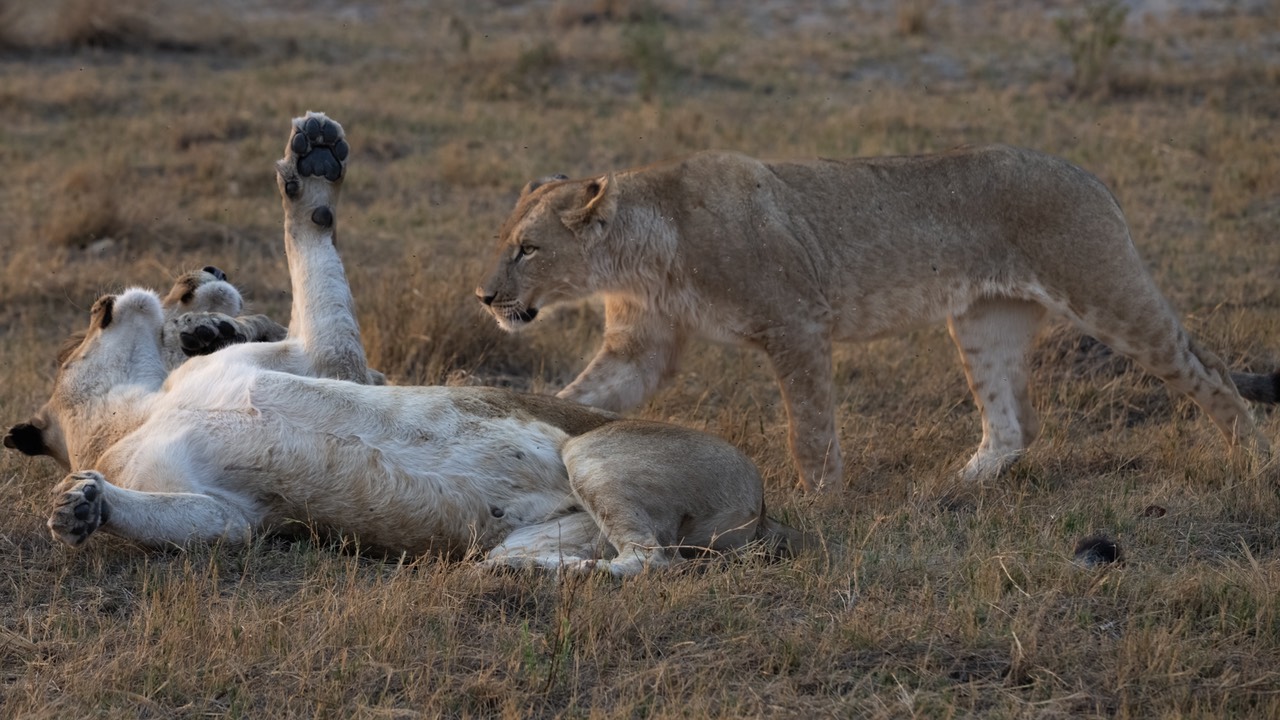
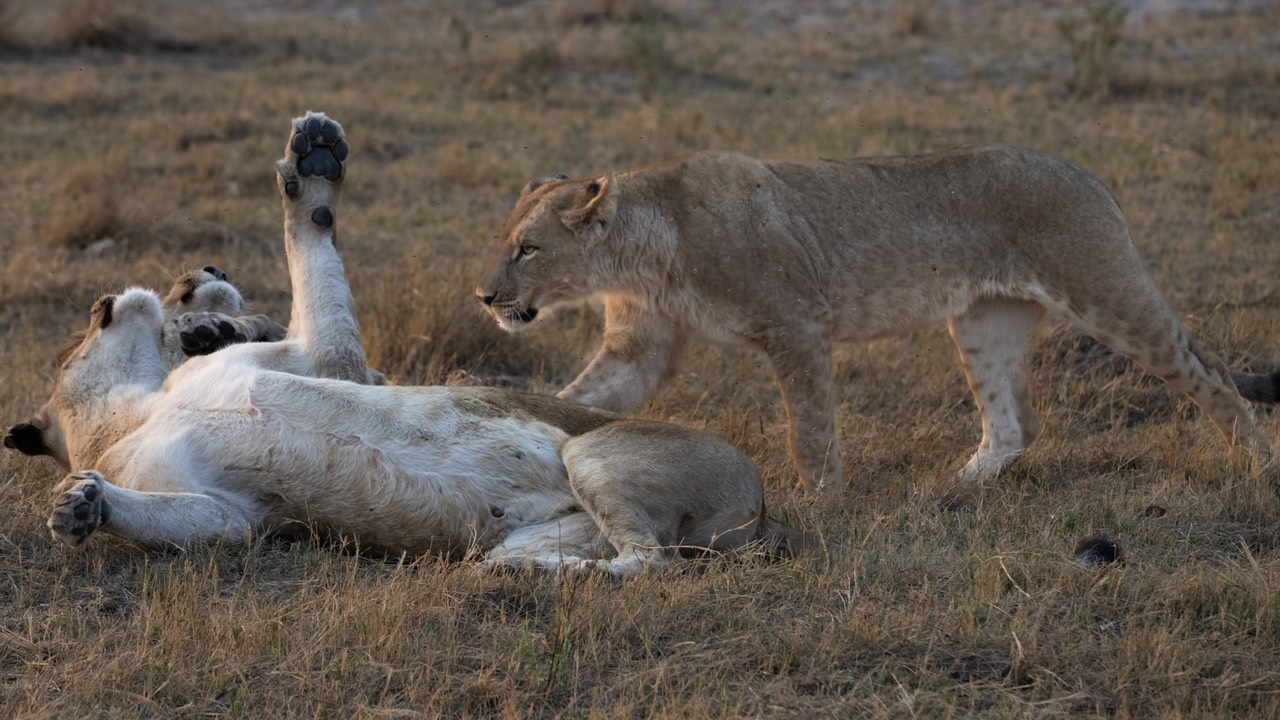
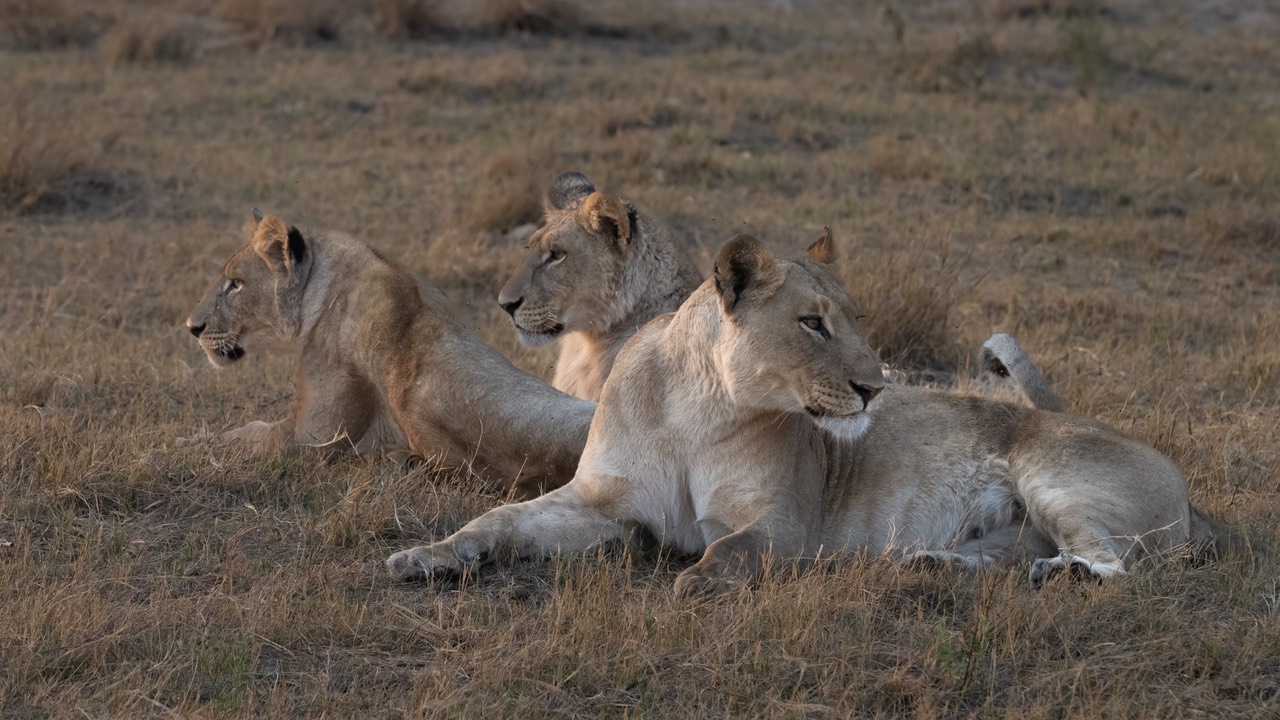
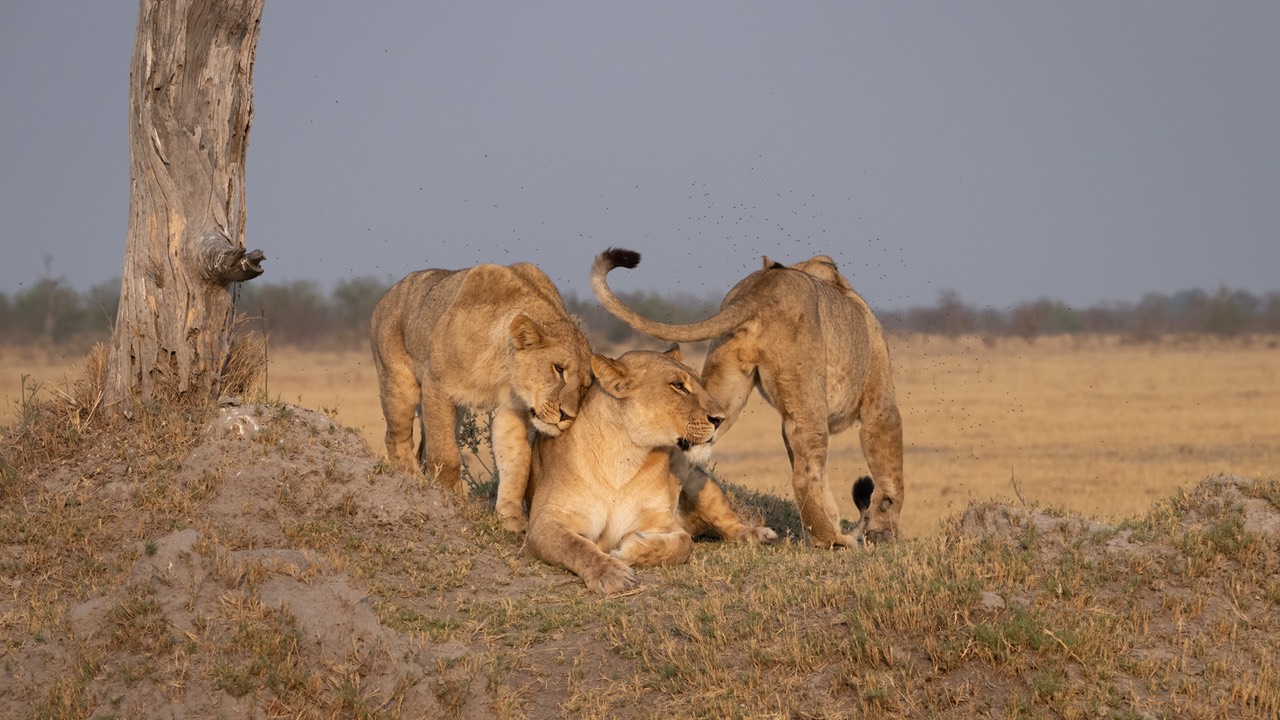
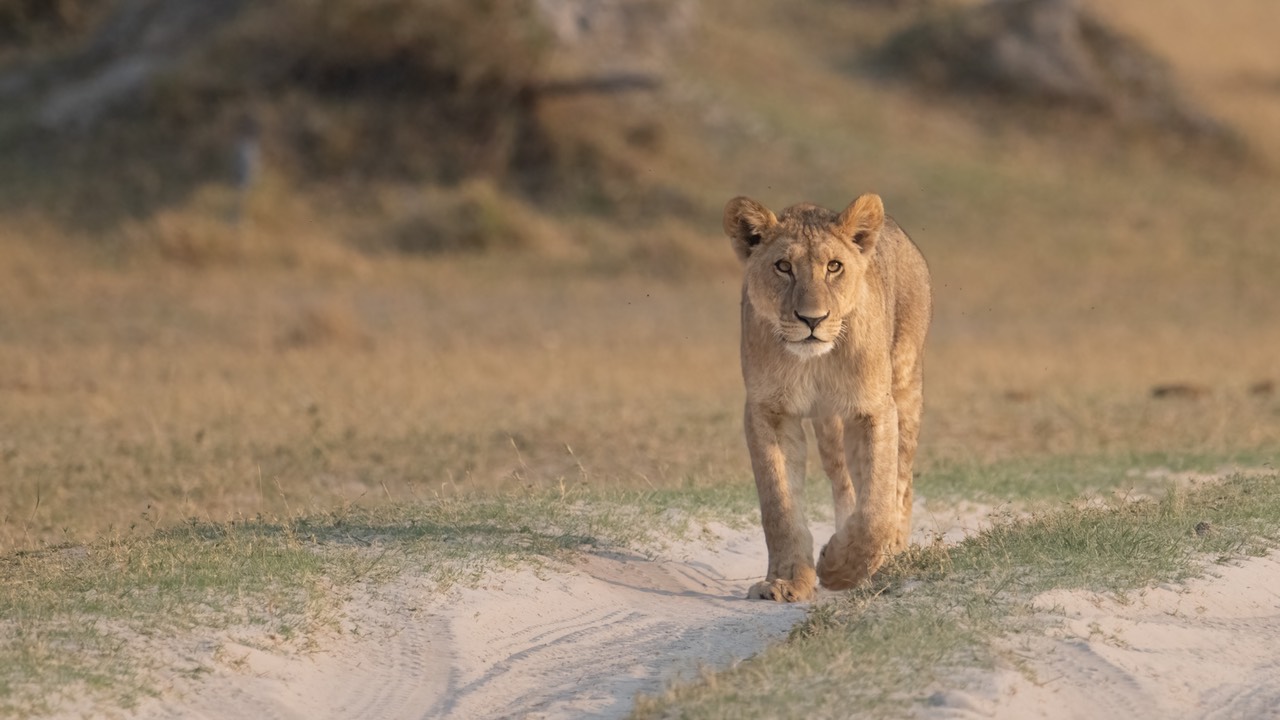
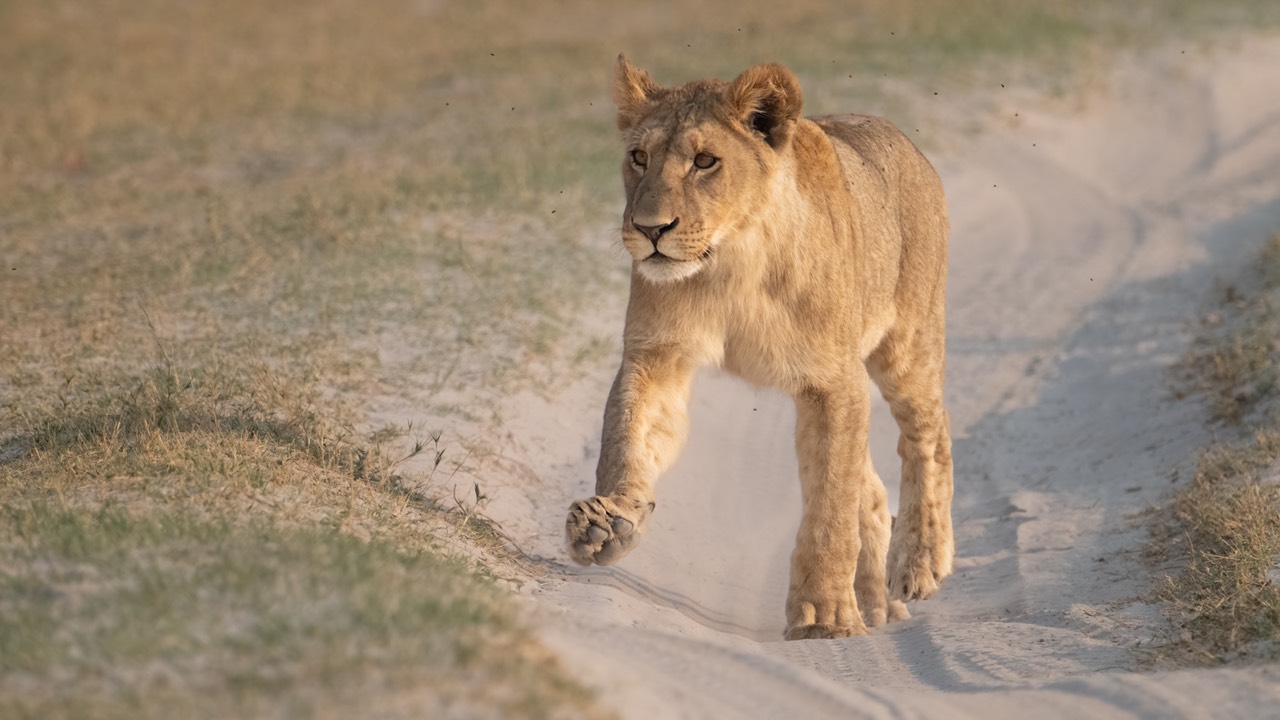
Turns out it was the day of the lions
We decided to leave the group of lions when they slowed down to rest, as the temperature continued to rise into mid-morning. As we traveled the area, just after our morning rest stop believe it or not we spotted another pride of nine lions. The guides were sure this group was not part of the first pride as we had moved a significant distance from that pride so we could stop at a scenic spot for morning break. So we designated it as the second pride of the morning. This group was actively eating at a kill [That would be another indicator of "different" pride; the two groups would have hooked up had they heard a kill from a portion of their pride]. We took the much messier images while the females continued to devour the kill. After spending time with them we eventually headed back to camp for our lunch and afternoon break.
The second (eating) pride also had nine lions, bringing our individual lion count to 21 for the trip in just over 24 hours! I don’t usually take lots of pictures of lions eating because most people I might show them to find them very gory. I try to take less gory images; here's a somewhat less gory image:

After our lunch, initial afternoon image reviews with Thom, a short break, and then the required British tea break, we headed back out at our usual afternoon start time of 4 pm. We spotted additional lions in this trip, but the guides were sure they were part of one of the prides we had already spotted, so we did not count these. The lion count for the day ended up 18 with the extra lions spotted more than once during the day. That count is worth counting as the Day of the Lions.
[I'll point out again that one of the benefits of a late season trip in Botswana is that the water sources force the animals to congregate closer together. In April, for instance, we do see some lions in Xakanaxa, but certainly not this level of activity. When the water is ubiquitous and spread out, so are the prey and predators. As the water dwindles down to just the permanent sources, things get concentrated to a specific area and finding both prey and predators is a lot easier. The guides have a word for this. They'll say an area is "pumping." I expect next year's September trip to be similar to this one: Tony will be teaching that workshop across three different permanent water areas, and I'll bet they'll be pumping...]
A lesson about Pre-Release Capture (30, 60, 120 fps)
The three highest frame rates for the Nikon Z8 and Z9 are 30, 60 and 120 fps [the Zf can do 30 in Pre-release capture]. All of these frame rates output only JPEG files and they each use different crops of the sensor to manage to shoot their specific frame rate and image size. I don’t often use these high speed rates because I’d rather produce raw files. Without Pre-release capture, the Z8 and Z9 top out at 20 fps recording NEF (raw) files [the Zf tops out at between 6.5 and 8.2 fps with raw and a live viewfinder, depending upon shutter type used]
Turning the Pre-release burst—Custom Setting #D3 on the Z8 and Z9—to either .3 second, .5 seconds or 1 second changes the way the camera operates when using Pre-release capture. Now the camera will be set to copy a burst before the shutter is pressed. The time the pre-release buffer is begun is with a half press of the shutter release. Starting focus (AF-ON) also starts the buffering.
Pre-release capture is used most commonly for trying to capture an event that you might otherwise miss due to your reaction time. Say you’re waiting for a bird to take flight; normally you miss the actual movement of take off due to reacting too slowly before you press the shutter release. In some cases, you might be so late pushing the first image taken doesn’t even contain the bird! Using Pre-release capture, you could be collecting images from up to 1 second before you press the shutter, which will also be saved when you finally press the shutter release.
If you run the numbers for each speed, C30 means as many as 30 additional frames, C60 is 60 additional frames, and C120 is 120 additional frames. All frames captured before you pressed the shutter release. You set the Pre-release burst time based on the frame rate you’re planning to use and how many images you want before the shutter was set [basically, you're telling the camera you're slow in reaction time or fast ;~]. I usually use 60 fps and a full second because my reaction time has gotten quite slow as I have aged. If I can’t afford to go into DX mode, I’ll set it to 30 FPS instead as that uses the full frame to capture the image and hope I got it. (Again Custom Setting #D3 is being changed to make that adjustment.)
Every new firmware seems to make a slight change to this mode. Read up on your camera to understand the full set of limitations. The Z8 needs to reset what’s being captured prior to release after 30 seconds. There is a warning indicator at the middle bottom of the viewfinder display. If the buffer is good and still being managed by the camera, the icon has a green dot in it. If 30 seconds have expired, a question mark will be there instead because the camera has stopped buffering the pre-release info [I believe this is partially done to manage sensor heat/noise]. The Z9 can have more than a 30 second buffering time [depends upon firmware installed], but keeping an eye out for the question mark is still a good idea.
To start, begin holding focus with AF-ON or a back button technique, or half press the shutter release. To begin taking images press and hold shutter for at least a second. Release shutter to end the sequence. [The "at least a second" caveat is mine. I've found that if you just tap the shutter release in Pre-release capture, you don't always get the sequence you're expecting. I've taken to telling people to hold the shutter release down for a bit, and I use "for one second" because that's something they can comprehend.]
During your wait to press the shutter, always monitor the status by occasionally looking at the pre-release capture icon in middle bottom of viewfinder. If the green light disappears, release your focus button and/or shutter release, and restart the sequence.
The above image of a Little Bee-Eater is taken at my normal 20 fps rate using raw output. It was entirely luck to capture, and it still wasn’t "lucky enough" since I usually just take short bursts and ended up not getting the bird/wing position I wanted. This was the eighth frame of a nine frame sequence. All of the seven prior images showed a (mostly) perched bird. The ninth image showed the bird had turned right and the head and the wing position was not good enough for a keeper.
The following sequence of a Crimson Breasted Bee-Eater I would break down into four categories. 28 images at the beginning were Bird on a stick photos (duration 1/2 second), 28 were Bird looking left images (duration 1/2 second), 21 were Take Off and Flight images (Duration 1/3 second) and 6 or more were unusable at the end of the sequence as the bird flew out of my framing. Breaking down the third category, I’m posting the 6th and 10th image. Fifteen of the 21 take-off-and-flight photos were good enough to have been keepers. (One consequence of "waiting for the bird" is that I accidentally took one of more sequences prior to getting the "good" sequence.)
When I’m switching in and out of Pre-Release Capture mode, since I already have Custom Setting #D3 set, all I do is pick a frame rate over 20. To turn it off, I switch the frame rate back to 20. [I go a bit further in my instructions: since the images will be JPEGs, you sometimes have to account for a slight difference in how the raw and JPEG files would be exposed. I'm often at +.3 or +.7 exposure compensation when taking raw photos, but there's no highlight retrieval possible with JPEG, so I have to dial that down. Tony always uses manual exposure mode, so he could just move the shutter speed up or down a bit instead.]
